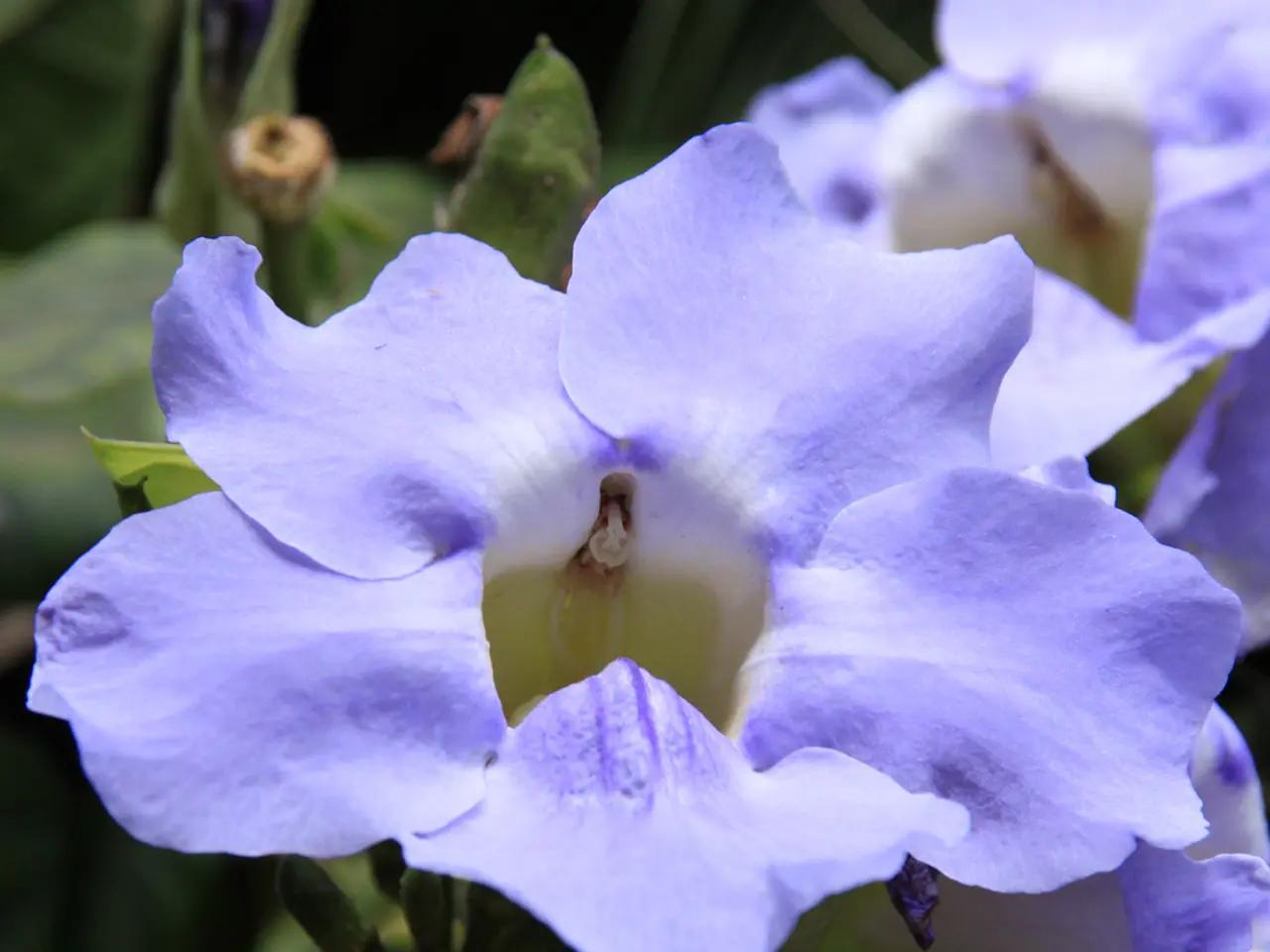Planting Seeds in March Tasks
In the heart of winter, gardeners across the UK are planning for the warmer months ahead, preparing to sow half-hardy annual climbers that will bring a burst of colour and life to their outdoor spaces. Here's a step-by-step guide to help you grow these stunning plants.
## Sowing Indoors
The process begins indoors, where seeds of climbers like cathedral bells (Cobaea scandens), morning glory (Ipomoea), Thunbergia, and purple bell vine (Rhodochiton atrosanguineum) are sown. Soaking seeds in water for a few hours can help improve germination rates, but good quality seeds specific to each variety are essential. A well-draining seed starting mix is used to fill seed trays or small pots, and seeds are sown about 1/4 to 1/2 inch deep. Cover the seeds with a thin layer of the mix and place the trays in a warm location with temperatures around 70-75°F (21-24°C) until germination occurs. Keep the soil moist but not waterlogged.
## Transplanting Indoors
Once seedlings have their first set of true leaves, they are pricked out into individual small pots. A mix that is slightly more fertile than the starting mix is used to support growth. Provide support for the seedlings to climb, such as small trellises or sticks, and ensure there is good light, but avoid direct sunlight which can be too intense indoors.
## Hardening Off and Outdoor Planting
About two weeks before the last expected frost, seedlings are gradually introduced to outdoor conditions, a process known as hardening off. Begin with a shaded area and gradually increase exposure to sunlight over the two-week period. Wait until after the last frost to plant the seedlings outdoors, choosing a location with full sun to partial shade, depending on the specific variety’s requirements. Plant in well-draining soil with a trellis or climbing frame for support.
## Post-Planting Care
After planting, water regularly, especially during hot weather, and fertilize lightly but regularly to encourage strong growth and flowering.
Morning glory adds wonderful colour and drama to any planting scheme with vivid flowers that open early and close up in mid-afternoon. Thunbergia is a vigorous perennial, often grown as a half-hardy annual, with black-eyed Susan flowers. Purple bell vine is a long-flowering perennial climber, usually grown as a half-hardy annual outdoors in the UK, with impressive tubular dark purple flowers.
Seeds of various vegetables, including tomatoes, can be sown indoors or in a greenhouse from this month until mid-spring. Chives, an easy perennial herb to grow, can also be sown under cover this month. They are ideal to edge paths and vegetable beds, or to add to herb containers.
Weed seeds germinating in the soil is a good sign that it is warm enough to sow hardy crops outdoors. Many panicum grasses are favourites in borders, gravel gardens, and as foliage plants for cutting. 'Giant Prague' and 'Monarch' are some great varieties of celeriac, while cosmos are popular half-hardy annuals with airy foliage and vibrant daisy-like blooms, suitable for container displays, cut flowers, and cottage garden borders.
By following these steps, you can successfully grow these half-hardy annual climbers outdoors after the last frost, transforming your garden into a vibrant, colourful oasis.
While planning for the warmer months, consider sowing half-hardy annual climbers like morning glory, Thunbergia, and purple bell vine indoors as part of your home-and-garden lifestyle. To do this, soak the seeds for improved germination before sowing them in a well-draining seed starting mix and place the trays in a warm location. After seedlings have their first set of true leaves, transplant them into individual pots and gradually harden them off before planting them outdoors in your garden during the appropriate season.




